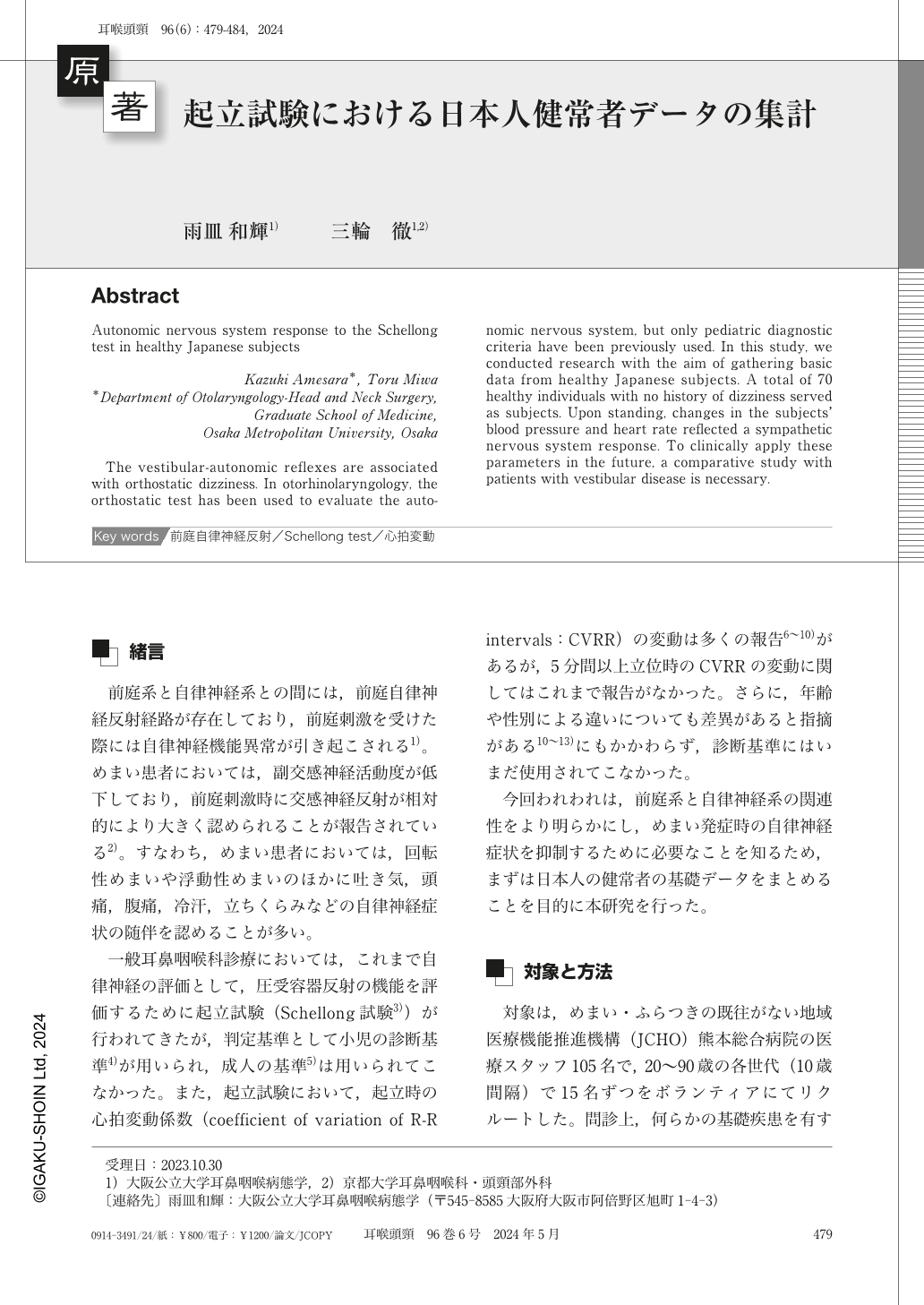Japanese
English
- 有料閲覧
- Abstract 文献概要
- 1ページ目 Look Inside
- 参考文献 Reference
緒言
前庭系と自律神経系との間には,前庭自律神経反射経路が存在しており,前庭刺激を受けた際には自律神経機能異常が引き起こされる1)。めまい患者においては,副交感神経活動度が低下しており,前庭刺激時に交感神経反射が相対的により大きく認められることが報告されている2)。すなわち,めまい患者においては,回転性めまいや浮動性めまいのほかに吐き気,頭痛,腹痛,冷汗,立ちくらみなどの自律神経症状の随伴を認めることが多い。
一般耳鼻咽喉科診療においては,これまで自律神経の評価として,圧受容器反射の機能を評価するために起立試験(Schellong試験3))が行われてきたが,判定基準として小児の診断基準4)が用いられ,成人の基準5)は用いられてこなかった。また,起立試験において,起立時の心拍変動係数(coefficient of variation of R-R intervals:CVRR)の変動は多くの報告6〜10)があるが,5分間以上立位時のCVRRの変動に関してはこれまで報告がなかった。さらに,年齢や性別による違いについても差異があると指摘がある10〜13)にもかかわらず,診断基準にはいまだ使用されてこなかった。
The vestibular-autonomic reflexes are associated with orthostatic dizziness. In otorhinolaryngology, the orthostatic test has been used to evaluate the autonomic nervous system, but only pediatric diagnostic criteria have been previously used. In this study, we conducted research with the aim of gathering basic data from healthy Japanese subjects. A total of 70 healthy individuals with no history of dizziness served as subjects. Upon standing, changes in the subjects' blood pressure and heart rate reflected a sympathetic nervous system response. To clinically apply these parameters in the future, a comparative study with patients with vestibular disease is necessary.

Copyright © 2024, Igaku-Shoin Ltd. All rights reserved.


